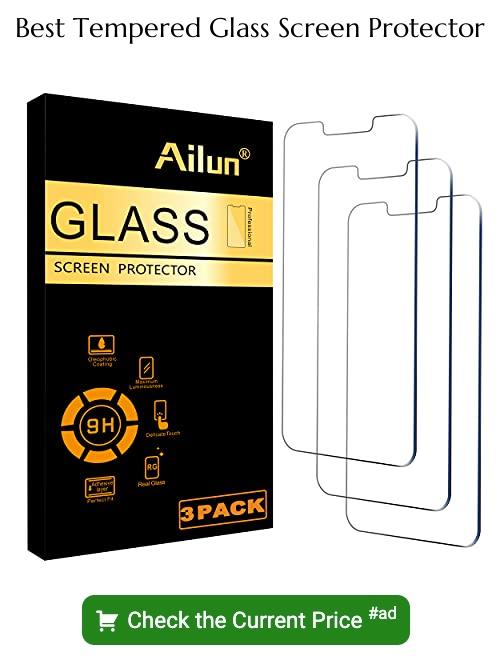Yes, tempered glass is impact resistant due to the heat treatment process it undergoes, enhancing its strength.
Tempered glass is indeed impact-resistant, making it a popular choice for windows in homes and commercial buildings. This type of glass undergoes a special heat treatment process that makes it four to five times stronger than regular glass. Not only does this enhance its resistance to impact, but it also ensures that if it does break, it shatters into small, dull pieces instead of sharp shards, providing an added safety feature.
This article will delve deeper into the properties, manufacturing process, and applications of tempered glass, providing you with a comprehensive understanding of why it’s a top choice for impact-resistant windows.
Key takeaways:
- Tempered glass is impact resistant due to a heat treatment process.
- Tempering makes glass 4-5 times stronger than regular glass.
- Tempered glass shatters into small, dull pieces for safety.
- Tempered glass is commonly used in windows, tables, and doors.
- Tempered glass cannot be altered after the tempering process.
Understanding the Definition of Tempered Glass

Tempered glass, often referred to as toughened glass, undergoes a special process that enhances its strength compared to normal, annealed glass. This type of glass is made by heating up regular glass to high temperatures and then rapidly cooling it down, a process known as quenching.
The quenching process results in the outer surfaces of the glass cooling faster than the center. This puts the surfaces into compression and the interior into tension, which ultimately makes the glass tougher.
Due to its safety features, tempered glass is commonly used in several applications – car windows, glass doors and tables, and even smartphone screens are a few examples. When broken, it shatters into small, rounded pieces, reducing the risk of injury.
It’s important to understand that once the glass has been tempered, it can’t be cut, drilled, or reshaped without shattering. All alterations need to be done prior to the tempering process.
It’s main features include enhanced strength, safety when broken, and its inability to be altered after tempering.
The Process of Tempering Glass
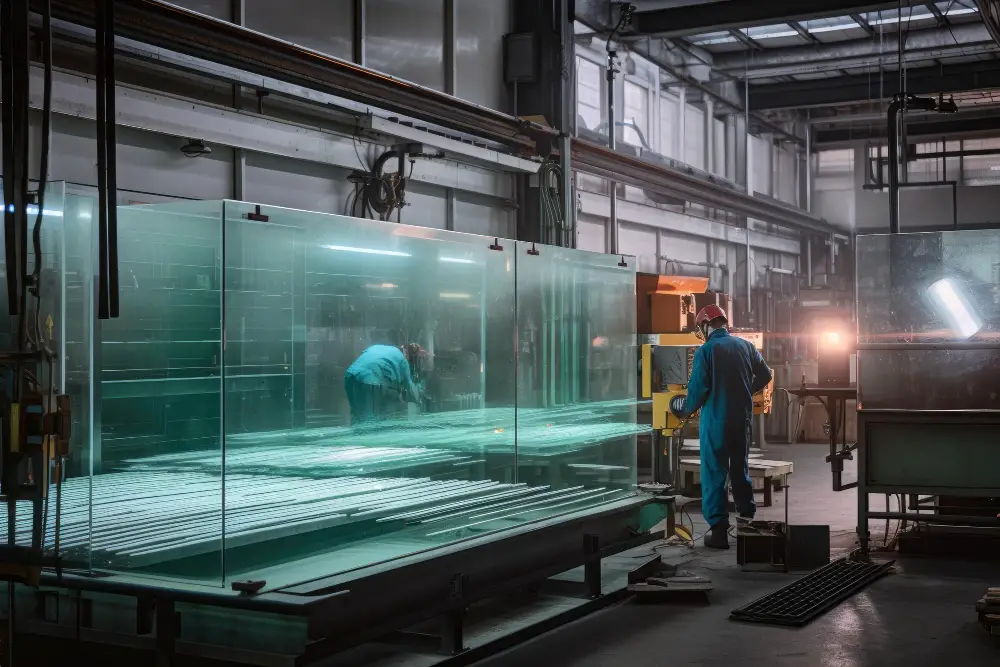
Tempering involves exposing a piece of glass to extreme heat and then rapidly cooling it, a process known as quenching. This can be achieved in an industrial oven or kiln heated to around 620 degrees Celsius. Once the glass reaches this temperature, it’s quickly cooled down, typically by a high-pressure blast of air.
This shock of the sudden temperature change causes the outer surface of the glass to harden and contract, while the interior of the glass remains in a heated state, cooling slowly. This creates a tension in the glass that makes it tougher than untreated glass, increasing its impact resistance and reducing the chance of injury by causing the glass to break into small, granular pieces instead of sharp shards.
The result of this process: glass that can stand up to greater force or pressure. It’s worth noting that glass thickness can affect the tempering process, with thicker glass needing longer heating and cooling times to attain the proper tension.
Regarding tempered glass’ usage, it finds extensive application in several areas due to its durability and safety features. These include shower doors, car windows, and certain types of window and door installations in buildings. Considered significantly safer than standard glass, its property to break into small, dull pieces instead of large, jagged shards is crucial in reducing injury risk. However, although it’s significantly stronger than standard glass, it’s not completely indestructible.
How Impact Glass Differs From Tempered Glass
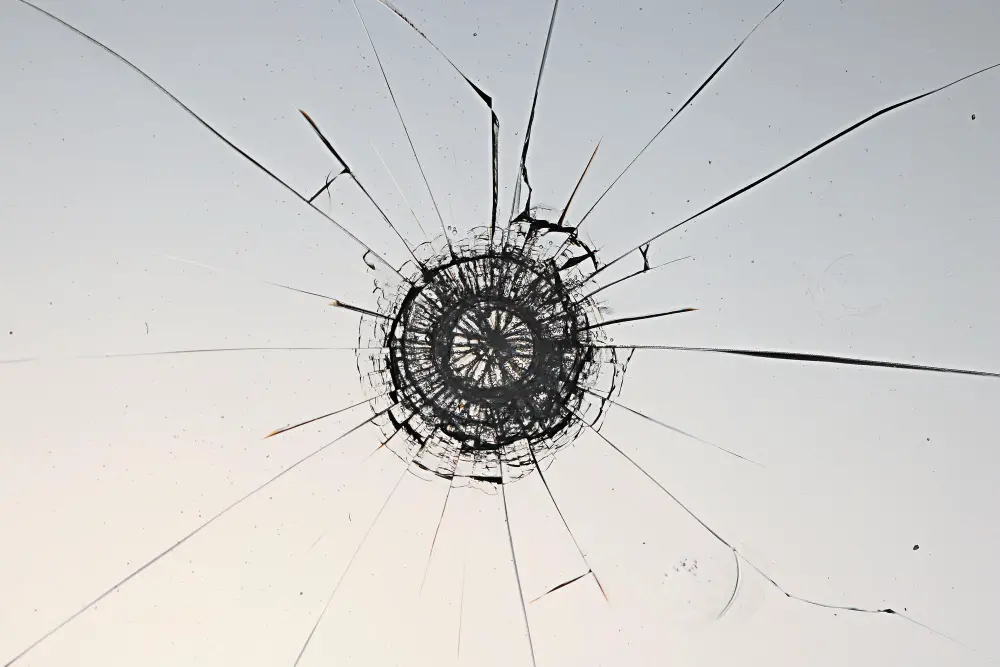
Primarily, impact glass is composed of two sheets of glass bonded together with a special interlayer of polyvinyl butyral, offering extra strength to withstand forceful impacts. Tempered glass, on the other hand, undergoes thermal or chemical treatments to increase its strength, however, does not include an additional layer for bonding.
Impact glass is designed to remain intact, even when shattered. Meanwhile, tempered glass shatters into small, harmless pieces to prevent injuries.
Impact glass provides enhanced noise reduction and energy efficiency due to its insulating layers. While tempered glass can also offer these benefits, it depends significantly on the manufacturing process, thickness, and installation techniques.
Extreme weather resistance is a notable feature of impact glass. It is built to stand up to high winds, flying debris, even hurricane-force winds. On the flip side, tempered glass is more about personal safety than weather resistance.
Where security is a concern, impact glass serves to discourage break-ins, due to its shatter-resistant nature. Tempered glass, although stronger than regular glass, does not offer this level of security.
In terms of cost-effectiveness, impact glass may have a higher initial cost but could lead to long-term savings on energy bills and insurance premiums. Tempered glass is more budget-friendly upfront but does not offer the same long-term financial benefits.
So, while both share the trait of enhanced strength compared to regular glass, their applications, benefits and initial costs vary greatly, making it indispensable for homeowners to consider their specific needs before choosing the type of glass for their windows.
Debunking the Myth: Tempered Glass and Plastic

In comparing tempered glass to plastic, it’s crucial to highlight their key differences. To begin with, tempered glass is a type of safety glass processed by controlled thermal treatments to increase its strength, while plastic, as a general term, refers to materials that can be molded into various shapes and sizes.
While they may seem similar in their transparency, the physical properties of both offer unique benefits. Tempered glass, once hardened, stands up extraordinarily well against strong forces. Meanwhile, plastic is more susceptible to scratches but unlike glass, doesn’t shatter upon impact.
Next, let’s talk about heat resistance. Here, tempered glass has a definitive advantage. While plastic can melt and warp when exposed to high temperatures, tempered glass is more resistant, retaining its shape and strength even in extreme heat.
As for their maintenance, both have unique needs. Glass can be cleaned with common household cleaners while plastic requires specific cleaning solutions to avoid surface damage.
Finally, consider the environmental angle. Glass is recyclable and thus, more eco-friendly as compared to certain types of plastic.
All these distinctions clarify that tempered glass and plastic, while appearing similar, have their unique characteristics. Knowing these distinctions can help you make more informed decisions when choosing materials for various applications.
Addressing the Tempered Glass and Temperature Fluctuation Myth
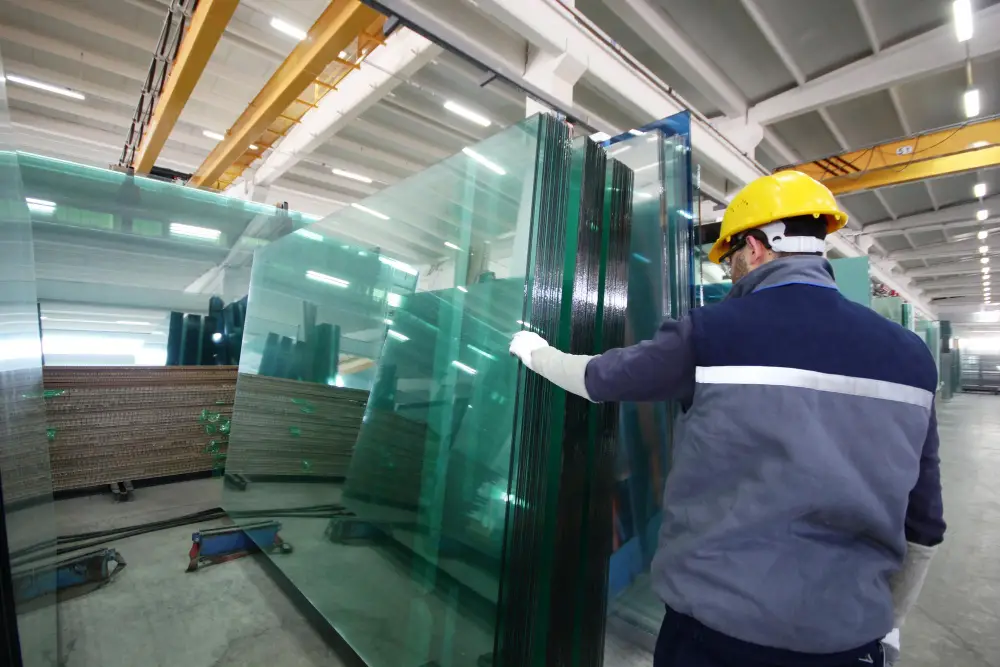
Contrary to common presumption, tempered glass is meticulously designed to withstand temperature fluctuations. This endurance stems from the very process of its making. Here are some essential points to demystify this subject:
- The process of manufacture involves subjecting the glass to extreme heat followed by a rapid cooling process. This results in a product that is resistant not just to physical impact, but also to varying temperatures.
- Tempered glass can tolerate a wide range of temperatures without breaking or getting damaged, making it a top choice for regions experiencing drastic temperature swings.
- The robust nature of tempered glass should not be confused with thermal resistance. Although tempered glass can resist temperature fluctuations, it is not designed to insulate your home from heat or cold.
- Using tempered glass in combination with other types of window glass, such as double-glazed windows, can further enhance the thermal efficiency of your home.
These elements illustrate the simultaneous strength and sophistication of tempered glass, unravelling its inherent temperature fluctuation resistance.
Uncovering the Safety Aspects: What Happens When Tempered Glass Breaks?
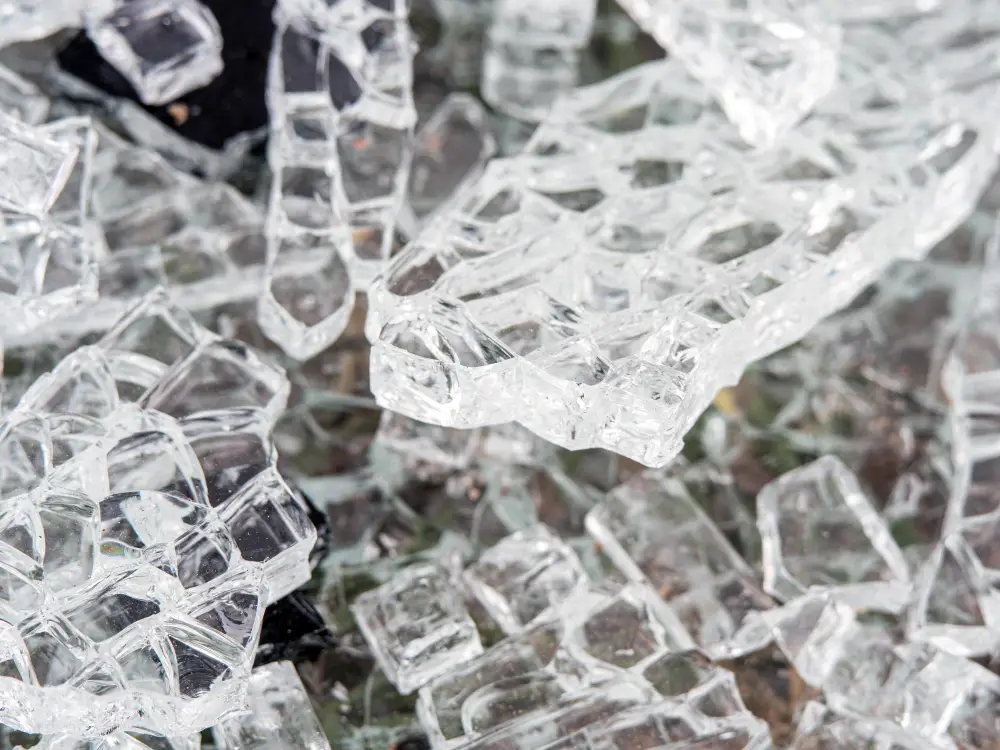
Tempered glass, when subjected to extreme force, doesn’t shatter into dangerous shards. The safety is inherent in its design, thanks to the heating and rapid cooling process it undergoes during manufacturing.
Upon impact, tempered glass crumbles into small, almost harmless, chunk-like pieces. This breakage pattern greatly reduces the risk of injury upon encountering a shattered window. It’s quite a stark distinction from traditional glass, which shatters into sharp, potentially dangerous pieces.
Moreover, it’s important to note that a window made of tempered glass is harder to break in the first place. Its strength surpasses regular glass by about five times due to its manufacturing process.
Lastly, delving into the specifics of replacing a broken tempered glass window, it’s a good idea to seek professional help. This is due to the unique nature of tempered glass, and the intricate process involved in its installation.
However, ensuring a damaged tempered glass window is safely cleared away is something you can do. Wearing protective gloves, carefully gather up pieces and dispose of them properly to prevent any accidental harm to unsuspecting individuals who might come into contact with it.
Essentially, tempered glass offers high safety thanks to its unique breakage pattern and superior strength. In case of damage, opt for professional replacement while taking the necessary precautions in its cleanup.
Testing the Fire Resistance of Tempered Glass
To assess the fire resistance of tempered glass, a variety of factors come into play. The standard temperature resistance of tempered glass is up to 250°C (482°F). However, rapid temperature changes can cause the glass to break.
Fire testing a tempered glass window generally involves:
- Subjecting the glass to extreme heat that mimics the conditions of a fire. This can help evaluate its resistance and at what point it might fail.
- Observing the behavior of the tempered glass under these conditions. It’s crucial to record the signs of alteration like warping, discolouration, or cracking.
- Measuring heat transfer through the glass. Higher quality tempered glass should provide better insulation and reduce the amount of heat passing through.
Understanding the results could help in choosing the right type of tempered glass for specific needs. Furthermore, the utilization of fire-resistant sealants and frames can enhance the overall fire resistance of a window.
It’s important to remember that while tempered glass is more robust than standard glass, it is not fireproof. In the case of prolonged exposure to extreme temperatures, it can still shatter. Hence, tempered glass should be part of an overall fire safety plan, which may include fire-resistant walls and alarms.
FAQ
What is the most impact resistant glass?
The most impact-resistant glass is a resilient type of impact glass that combines both tempered and laminated glass into a double- or triple-pane unit.
Can tempered glass withstand a hurricane?
Yes, tempered glass can withstand a hurricane due to its strength and durability.
How can you tell if glass is impact resistant?
The presence of multiple reflections in the glass, indicative of its multiple layers, is a reliable sign that the glass is impact-resistant.
What process significantly bolsters the impact resistance of tempered glass?
The quick heating and rapid cooling process during manufacturing significantly bolsters the impact resistance of tempered glass.
How does laminated glass compare to tempered glass in terms of impact resistance?
Laminated glass, comprising two sheets of glass bonded with a plastic interlayer, offers superior impact resistance compared to tempered glass, which is designed to break into small granular pieces upon impact.
Are there specific standards or certifications for asserting a glass’s impact resistance?
Yes, a glass’s impact resistance can be measured against specific standards such as ANSI Z97.1 in the U.S. and EN 12600 in Europe, with grade verifications via certifications like CPSC 16CFR1201 or SGCC.
Related Stories
- Can Hurricane Winds Break Windows? – Understanding Weather Impact on Home Safety
- Heavy Duty Plastic to Cover Windows: Effective and Affordable Solutions
- How to Open a Window From Outside
- Replacing Glass in Aluminum Window: Step-by-Step Tutorial for Easy Repair
- Clad Window: Comprehensive Guide on What It Is & Its Advantages
Recap
